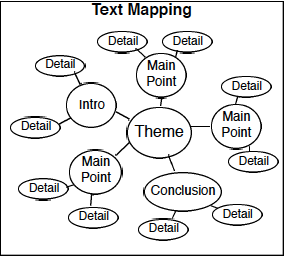ASL Texts for Consecutive Interpreting Practice
Strategies for Use
Why Consecutive Interpreting?
This resource is designed to for practicing ASL to English interpretations in a consecutive manner. Our field’s current understanding of best practices recognizes that an important step in mastering simultaneous interpretation is first interpreting consecutively. It’s been my experience as a mentor of interpreters that in order to learn how to incorporate new features in simultaneous interpreting, it is vital to first attempt it consecutively. Additionally, there are many times when consecutive interpreting is the most effective approach–regardless of the skill or experience of the interpreter. Debra Russell’s research of the use of consecutive interpretation in legal settings leads to a significant decrease in errors compared to simultaneous interpretations. (See Russell’s article in Swabey, Ed. 2002. New Designs in Interpreter Education: The Proceedings of the 14th Annual Convention of the Conference of Interpreter Trainers.) It is my hope that this resource might contribute to our field’s practice and use of the process of consecutive interpretation.
Structure of Texts
Each text is structured in the same way. At the top of each page, the ASL text is presented in its entirety. You can watch the entire text the first time to familiarize yourself with it before attempting to interpret it. Then, the text is presented in parts. The videos are in a slider. To go to the next section, just click on the arrow on the right side of the video.
When you have finished all the sections of the story, the complete text is once again available. There is a link that will take you back to the complete video.
At the bottom of each page is a summary of the text, which allows you to check your comprehension and assist in your analysis.
Process for Practicing in a Consecutive Manner
- Watch the entire text solely for comprehension.
- Watch each section and interpret in a consecutive manner. (This would be a good opportunity to audiotape or videotape your work.)
- Interpret the complete text at the end of the section in a simultaneous manner.
- Review the summary of the text.
- Re-interpret the text–in either a consecutive or simultaneous manner.
Analyze discourse markers
Using the sections of the text, notice what markers Debbie and Tracy give which signifiy the end of a section. Which language features seem to mark larger transitions, and which ones mark transitions within the same idea?
Practice “chunking” the texts.
After you have begun to recognize discourse markers, practice watching a complete text and pause the video at what you consider appropriate times. To do this, click on the left part of the control bar at the bottom of the movie. You can compare your choices for separating the text with where I choose to for the parts. Like everything with interpreting, there is no one answer to what constitutes an appropriate “chunk” but attempting to do this will assist you in helping to recognize the overall structures of ASL texts.
Do text analysis.
 On the first page with each text, there is a time code listing how long the complete text is. Choose a shorter one and analyze it for meaning, structure, and different linguistic features. One helpful tool can be mapping out the main points and details in a format similar to figure at right. You can also map out the flow of the text from point to point. For an in-depth explanation of how to text analysis, see the chapter by Elizabeth Winston and Christine Monikowski in Innovative Practices for Teaching Sign Language Interpreters. This book is edited by Cynthia Roy and published by Gallaudet University Press. http://gupress.gallaudet.edu/IPTSLI.html
On the first page with each text, there is a time code listing how long the complete text is. Choose a shorter one and analyze it for meaning, structure, and different linguistic features. One helpful tool can be mapping out the main points and details in a format similar to figure at right. You can also map out the flow of the text from point to point. For an in-depth explanation of how to text analysis, see the chapter by Elizabeth Winston and Christine Monikowski in Innovative Practices for Teaching Sign Language Interpreters. This book is edited by Cynthia Roy and published by Gallaudet University Press. http://gupress.gallaudet.edu/IPTSLI.html
All of these are just suggestions, and you may well come up with more uses on your own. It’s my hope that this format, however you use it, will lead to growth in your interpreting skills.
Good luck!
Doug Bowen-Bailey, 2002



